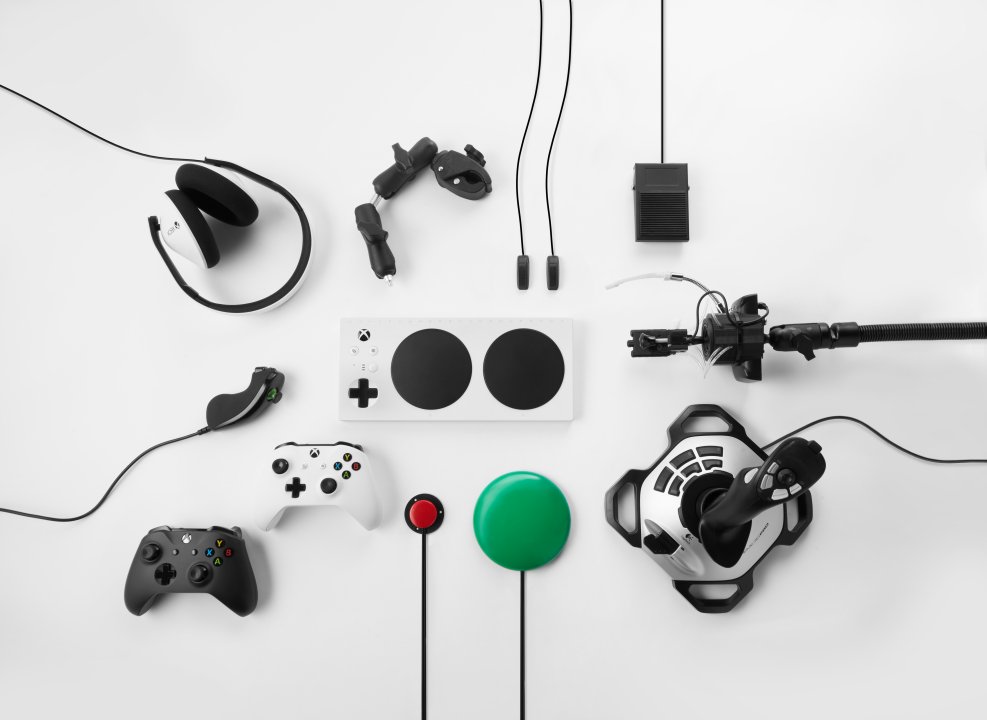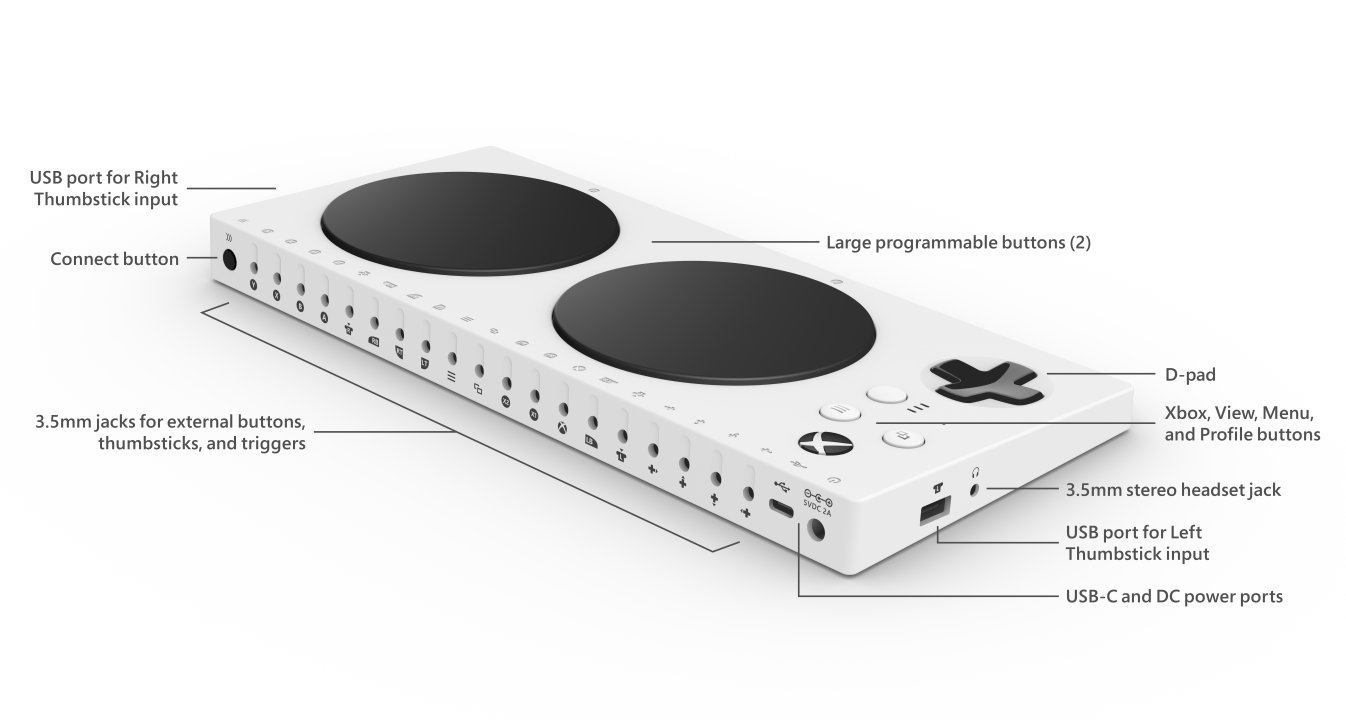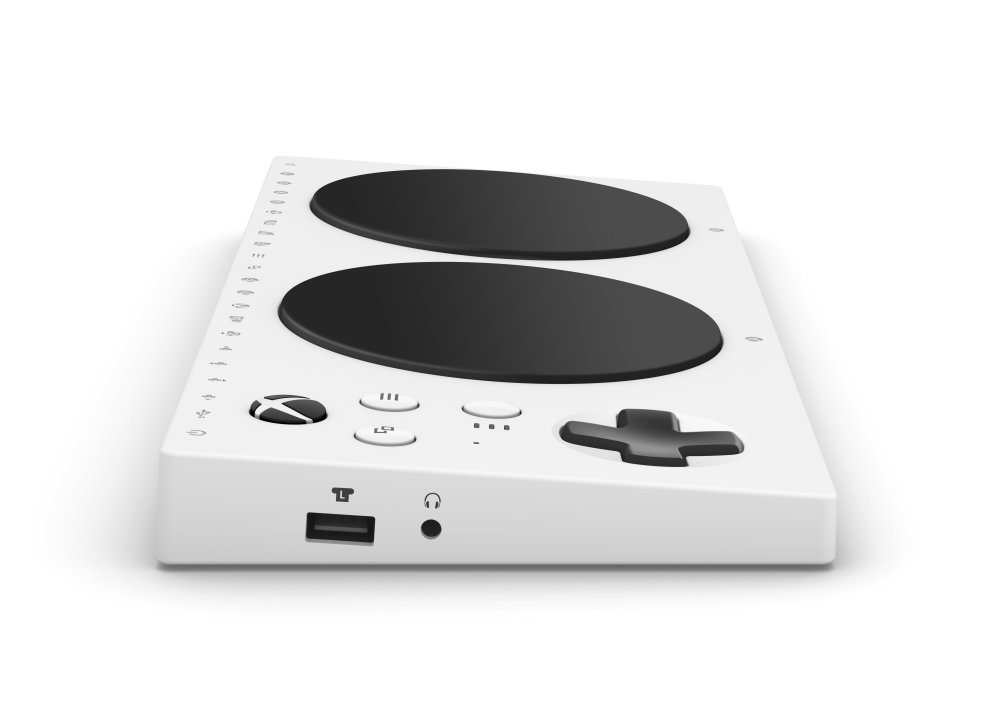Xbox Adaptive Controller Preview – E3 2018
In the midst of all the video games that get announced at E3, the Xbox team has actually decided to make news by revealing some new hardware. Originally unveiled a few weeks before E3 2018, the Xbox Adaptive Controller is a new peripheral that the publisher wants to release later this year, in hopes of getting more people into gaming. Targeting those with disabilities, the controller is meant as a highly flexible and customizable piece of hardware that that will allow more people than ever to participate in the wonderful world of interactive entertainment, however they can. We had a chance to hear more and see the new controller in action at E3 2018.

Our session was hosted by Bryce Johnson, Senior Inclusive Designer. He spoke about how much everyone loves games, but not everyone can participate. The traditional approach to controllers is definitely not for everyone, and the over 5 million people that have disabilities often struggle to enjoy this pastime due to their physical limitations. The controllers we all use and enjoy assume a lot of things – that we can hold them properly, that you don’t get tired while holding it, that you have thumbs which can deliver the pressure and flexibility required, and so on. Of course, these facts aren’t universally true, so overtime, organizations that work with people with disabilities have created all sorts of custom modifications to enable more people to participate. The team at Xbox, under the new CEO Satya Narayana Nadella, has set out to put their resources and manpower behind providing a first-party solution to these challenges.
The team has worked with existing organizations that target gamers with disabilities to design the new Xbox Adaptive Controller, such as The AbleGamers Charity, The Cerebral Palsy Foundation, SpecialEffect, and more. Everything about the controller was designed with as much flexibility in mind as possible – it’s large, so it is easy to handle, and can also comfortable rest on your lap; if put on a table, it has rubber feet preventing it from sliding, and it even supports standard mounts so it can be secured. All of the buttons are large, centered around two huge tactile touchpads, which can provide a variety of input options. The controller is slanted towards the user for less wrist strain, and its corners are rounded. But the real point of flexibility are the controller’s 19 ports on the back (one for each traditional input, from face buttons to triggers), which support 17 different functions and 2 USB ports. This provides users the chance to use existing peripherals, like one handed controllers or pedals, and define their functions through the Adaptive Controller.

The flexibility does seem rather endless. In our session, a user was able to play Minecraft with a one-handed controller. This meant only one thumbstick, which obviously means they cannot move and look around at the same time; however, there was a pedal, and by pressing down on it, the game used it as a “shift” key, and switched the thumbstick to camera control. This allowed the player to move, look, move, and so on. In another example mentioned, in a shooter the pedal could be assigned to make the player walk forward, and the stick to turn. Yes, these inputs are obviously not ideal and take some time to get used to, and it’s not the same experience that “typical” gamers would have with standard controllers, but the goal here is to make video games as accessible as possible. Even if one person is now able to enjoy Minecraft of Forza thanks to these accessible controls, that’s worth it.
With Microsoft taking the lead, other manufacturers are also eager to assist. Companies like Logitech are working with the team to ensure all their peripherals work with the Adaptive Controller, which uses standard jacks, for maximum compatibility with users’ existing switches.
On the software side, the Xbox One already has a co-pilot feature, which allows two standard controllers to be used as one. This already helps gamers with physical challenges to enjoy games. We also got a look at how the Adaptive Controller is configured – it seemed very straightforward, through the standard Xbox One Accessories app, where users already go to configure their Xbox One Elite Controller. You simply assign functions to each button/input, and can customize their utility.

Our session was concluded with remarks that the Xbox team is working hard to remove barriers of entry from gaming, and the controller is a result of many years of work and hours of consultations with people that are ultimately going to use it. From what we saw, it’s definitely a great piece of hardware that is sure to open some doors for disabled gamers to have better experiences. The Xbox One Adaptive Controller will be sold for $99 USD through the official Microsoft Store, and is planned for launch this September.
